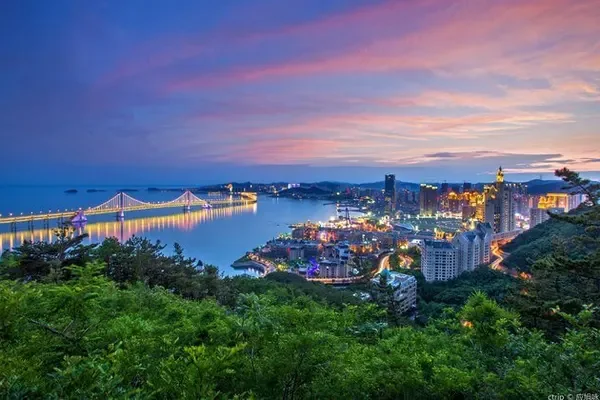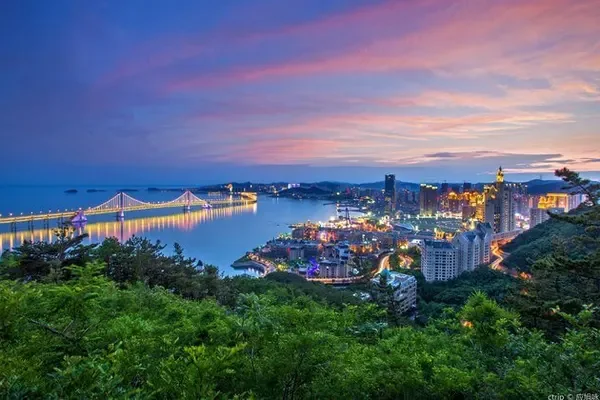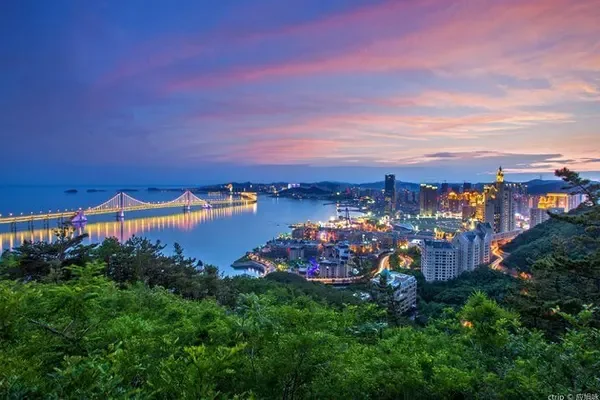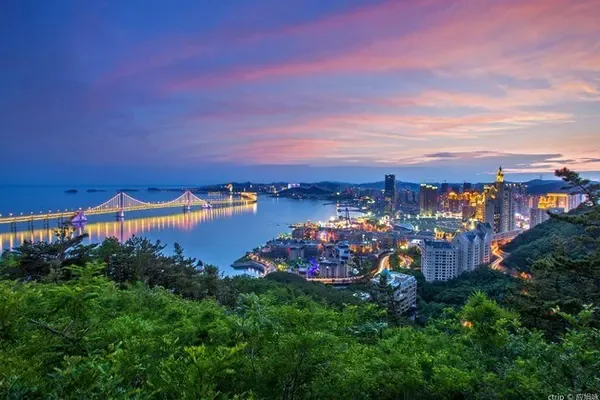
Maybe it's because there are too many "a glass of wine on New Year's Eve every year, and every Spring Festival every year". We feel that it is time to celebrate the New Year in a different way, and find a different place to experience different Chinese New Year flavors. After comparing and selecting many places, we chose Shanxi and Henan, two places with rich traditional customs and culture. On the night of February 11, 2013 (the second day of the first lunar month). We boarded the train from Nanjing to Taiyuan, and started a 6-day journey of searching for the taste of the new year.

Taiyuan Chapter
The train arrived at Taiyuan Station at 8:00 a.m. on February 12. We took bus No. 861 from the square in front of the station and arrived at a Wiki hotel chain in Taiyuan booked by Ctrip (130 yuan/standard room. Double breakfast) in about 20 minutes. After checking into the hotel, take a short rest and take bus No. 856 in front of the hotel. The whole journey takes about 50 minutes and you will arrive at the first stop of the trip—Taiyuan Jinci Temple.
Jinci was built in the 11th century BC, more than 3,000 years ago. The Jin Temple is a collection of ancient Chinese sacrificial buildings, gardens, sculptures, murals, and inscription art. It is a famous historical and cultural garden in my country. Jin Temple was originally the ancestral hall of Hou Shuyu (son of King Wu of Zhou and younger brother of King Wen of Zhou, known as Shuyu in history) of Tang Dynasty in the Western Zhou Dynasty. Later, Shuyu and his son Xiefu changed Tang to Jin, so it was called Jin Temple. The Jin Temple has undergone continuous reconstruction and expansion through generations, forming its current scale.

Jinci Park Entrance
To Jinci, you must pass through Jinci Park. There is no charge for Jinci Park, Jinci tickets are 80 yuan, and half-ticket for 60-year-olds. Before visiting the Jinci Temple, we ate a bowl of Shanxi sliced noodles on the pedestrian street in the park, 18 yuan per serving, and the taste was "bad". To put it bluntly, it was boiled noodles with a few noodles in salt water. It can only be used to satisfy hunger. Food and beverages in all well-known scenic spots are similar. Although they are expensive, most of them are tasteless, and Taiyuan is certainly not an exception.


The current Tang Shuyu Temple (Jin Temple) was rebuilt in the thirty-sixth year of Qianlong in the Qing Dynasty (AD 1771). Only a few arborvitae behind us (national first-class protected cultural relics) have witnessed everything that happened here in China's 3,000-year history.


There are many steles and inscriptions in the Jin Temple. Among them is the famous "Inscription Preface Stele" written by Emperor Taizong Li Shimin of the Tang Dynasty. The inscription reveals Li Shimin's core thought of governing the country in peace and taking politics as virtue. He also took the fall of the Sui Dynasty as a warning, and put forward the cutting-edge theory that "water can carry a boat, and it can also overturn it", and that the country should be based on the people;

Next to the inscription stele of Emperor Taizong of the Tang Dynasty, Du Fu, a great poet of the Tang Dynasty, witnessed the decline of the Tang Dynasty from prosperity to prosperity after the Anshi Rebellion. It is a warning inscription to warn future generations that "the article is a matter of ages, and the community is a piece of clothing". At the same time, it also verified the eternal and universal truth that "water can carry a boat, and it can also overturn it"!

At the end of the Sui Dynasty, Tang Gaozu Li Yuan (known as Tang Gong at the time) and his sons Li Jiancheng, Li Shimin and others conspired here to raise troops in Jinyang (that is, Taiyuan). And from here began the east to west expedition, defeated Wang Shichong, Dou Jiande and other heroes of the late Sui Dynasty in one fell swoop, unified the Central Plains, and established a unified and powerful Tang Empire in Chinese history.

The Jin Rentai in the Jin Temple was first cast in the Northern Song Dynasty. With extremely high casting technology and artistic level, it vividly portrays the intrepid and brave people of the Jin Kingdom in northern my country at that time. It was this powerful nation that wiped out the Northern Song Dynasty and created the astonishing Jingkang Disaster (also known as the "Shame of Jingkang").

The Notre Dame in the Jinci Temple is the only group of statues of the Song Dynasty left in my country. The statue of the Virgin Mary in the courtyard was built by Song Taizu Zhao Kuangyin's queen Liu E (from Shanxi) for her mother. It has a history of more than one thousand years.

The statues of Notre Dame changed the model of religious figures as statues before the Song Dynasty, and created a precedent for statues based on court or folk figures in my country. The statue of Notre Dame shows the magnificence and exquisiteness of the sculpture art of the Song Dynasty, and is a rare art treasure in our country.


The famous Wenchang Palace in the Jin Temple was rebuilt and expanded in the thirty-eighth year of Qianlong in the Qing Dynasty (1773). Wenchang Palace was not open when we arrived. It is said that there is a Wenchang Pavilion in the palace, also known as the Temple of Seven Sages. There are altars dedicated to the seven sages of history (Yurang, Li Bai, Bai Juyi, Fan Zhongyan, Ouyang Xiu, Yu Qian, Wang Qiong) in the temple.

Returning to the hotel from Jinci Temple, we stopped by Yingze Park in the center of Taiyuan to take a walk. We also went to a large supermarket called "Sams" for simple purchases that night. Although the trip to Taiyuan was in a hurry, it was too short. However, we still feel uncomfortable with the bad public transport situation in Taiyuan:
Take the 856 special bus to Jinci (it should be the window of Taiyuan, especially during the Spring Festival) as an example. It is obvious that the cars are dilapidated, the sanitation is poor, there are few trains, and the platform signs are vague. We have seen with our own eyes that even some Taiyuan locals have difficulty figuring out where to take the bus to Jinci. The taxi industry was even more chaotic. It was probably a common phenomenon in Taiyuan at that time not to use the meter and to dump passengers at will. We originally planned to take a taxi from the train station to the hotel (the distance is less than 2 kilometers). After queuing up at the taxi lane at the train station, we boarded a taxi with a complete license plate, but the driver said he would not use the meter and opened his mouth It was 20 yuan (7 yuan within 3 kilometers), and asked us repeatedly whether we had booked the accommodation. When they heard that we had booked a hotel, they immediately asked us to get off the bus. It is completely a virtue of "falling into the eyes of money and not getting out". In this regard, I wonder what the local traffic control department is doing?
Qiao Family Courtyard Chapter
On the morning of February 13, we walked from the hotel to Taiyuan Jiannan Bus Station and headed for Shanxi Qiao Family Courtyard. There is no direct bus from Taiyuan to Qiao’s Courtyard. According to the guidance of travelers, we took the long-distance bus to Qixian County, Shanxi, 12 yuan per person, and got off at the entrance of Qiao’s Courtyard. The shuttle bus drove for about 40 minutes and arrived at Qiao's compound at around 10 am.



The Qiao Family Courtyard, popularized by movies, TV series "The Qiao Family Courtyard" and "The Big Red Lantern", is crowded with people during the Spring Festival, full of New Year flavor.







Qiao's Courtyard - a fusion of history and modernity. The Qiao Family Courtyard is not too big, and there are not many things to see, a few hours of sightseeing is enough.
Pingyao Ancient City
From the Qiao Family Courtyard, the next stop is the ancient city of Pingyao. There is no shuttle bus from the Qiao Family Courtyard to the ancient city of Pingyao. Still according to the advice of online travelers, we "passed by" in the parking lot of Qiao's compound, and it really worked. Soon we settled with a driver of a travel agency at 10 yuan per person. The journey took more than an hour. At about 4:00 pm, we arrived at the west gate of Pingyao Ancient City. After getting off the bus, after contacting the Tongsenmao Inn in Pingyao City (booked by Ctrip), the inn quickly sent a car to pick us up and check into the city.

The folk-custom big kang room is 235 yuan per room, 18 square meters, public bathroom, no breakfast. Although the price is high, during the Spring Festival, in Pingyao City, where every inch of land is expensive, the price is not high. The guest room is full of Shanxi folk customs. This is the first time we have experienced the big fire pit + big flower quilt in the north. The feeling of Chinese New Year is different!

The ancient city of Pingyao has a history of more than 2,700 years. It is known as the four ancient cities in my country together with the ancient city of Lijiang in Yunnan, the ancient city of Fenghuang in Hunan, and the ancient city of Huizhou in Anhui. We have been to the four ancient cities one after another, but the ancient city of Pingyao is the most profound in scale and charm, the best protected and the most prominent in historical value. During the Spring Festival, there are many tourists in the ancient city of Pingyao, and the strong flavor of the New Year rushes to your face and wraps you up, making people full of festive joy.



Ming and Qing Streets in Pingyao Ancient City
The current ancient city of Pingyao was mainly rebuilt and expanded by the Ming and Qing dynasties. In particular, the street of Ming and Qing Dynasties in the city was once the financial center of northern China in modern times, known as China's Wall Street, and is now included in the World Cultural Heritage List. Pingyao Ancient City itself does not accept tickets (a total of 14 scenic spots inside and outside the city have a combined ticket of 160 yuan, half price for 60-year-olds). But as long as tourists enter any of these attractions, they have to buy a joint ticket. In order to be able to visit the ancient city wall of Pingyao, we chose a joint ticket.




Image of Pingyao—Looking for Ancestors (photographed at the former residence of Lei Lutai, head of Rishengchang)

Impressions of Pingyao—past and present (photographed at the former residence of Lei Lutai, head of Rishengchang)

During the Spring Festival, the ancient city of Pingyao is very lively, with music and dance everywhere, singing and dancing.

That night, the "Pingyao Chinese New Year Lantern Exhibition" was being held outside the south gate of the ancient city, which was really lively.


Image of Pingyao - Charming Night

Pingyao Imaging - Interaction between watchmen and tourists

On the night of the Spring Festival in Pingyao, a string of festive red lanterns light up the entire ancient city and your heart! The song-like years and the charming night unfold before your eyes. It seems to tell you that "a city is a poem, a book, and a piece of history"! The red and yellow lights flashing from time to time on the street seem to remind you that "we all come from the Chinese Yanhuang, we all come from the same root, and we identify with each other. It is the fate of the Spring Festival that brings us here"!




The ancient city of Pingyao is full of humanities and history, and there are many things to watch. We kept shuttling through the streets and alleys of the ancient city. Fully feel the rare taste of the New Year and the stories that happened here, and taste this precious world cultural heritage. The one-and-a-half-day trip to Pingyao was short and enjoyable, and I really experienced the charm of "Celebrating the New Year in a different way". On the evening of February 14th, we ended our trip in Pingyao and left Pingyao for Luoyang by train K273 (23:40-11:39 hard sleeper) at night. That night, we stayed on the train.
Luoyang chapter
At noon on February 15th, the train arrived at Luoyang Station. After leaving the station, we walked for about 20 minutes and arrived at Jinjiang Inn (Luoyang Railway Station Branch) (reserved by Ctrip), 152 yuan/standard room, 25 square meters, including double breakfast . Jinjiang Inn, a century-old brand, is impeccable. After checking in, we immediately returned to the train station and took the No. 81 bus. It took about 55 minutes to arrive at the Longmen Grottoes scenic spot in Luoyang, which we have been enjoying for a long time.

The Longmen Grottoes were excavated in the Taihe period of the Northern Wei Dynasty. After more than 400 years of continuous carving of stone statues in the Southern and Northern Dynasties, Sui, Tang, Five Dynasties, and Song Dynasties, the Longmen Grottoes have a history of more than 1,500 years. The Longmen Grottoes are about 1 km long from north to south, and there are 2,345 cave niches, more than 100,000 statues, and more than 2,800 stele inscriptions. It, together with Dunhuang Mogao Grottoes and Datong Yungang Grottoes, is known as the three major grotto art treasure houses in my country. Listed as World Historical and Cultural Heritage by UNESCO in 2000. Tickets for Longmen Grottoes are 120 yuan per person, half-ticket for 60-year-olds.

Our tour route in Longmen Grottoes (red circle in the picture below)

The Fengxian Temple in the Longmen Grottoes is a group of sculptures with the highest level of sculpture art, the most rigorous overall design, and the largest scale. It began to be carved in the third year of Xianheng Emperor Gaozong of Tang Dynasty, and it took three years and nine months to complete. Its main god is the world-famous Lushena Buddha, "Lushena" means vast wisdom and universal light. The folks also call it the sambhogakaya Buddha. Among the sculptures in Fengxian Temple, apart from Lusana Buddha, there are also two statues of the Lord and Attendant Bodhisattva, two disciples of the Buddha, King Kong and God King. The heights of the statues are patchwork, and the Lushena Buddha is located in it. At a glance, the whole cave temple presents a look and feel of stars worshiping the moon, and the shapes of each figure are lifelike, and the carving skills are exquisite, which can be called perfect.

According to legend, Lushena Buddha was carved according to Wu Zetian's appearance (Wu Zetian donated 20,000 rouge money), demonstrating Wu Zetian's highest political status as a generation of empress in the Tang Dynasty. "Lushena" represents the absolute truth of the Buddha and the complete wisdom of the Buddha. At this time, you are standing in front of Fengxian Temple, looking at the incomparable Lushena Buddha, and you have the feeling of "smiling in the prosperous Tang Dynasty for thousands of years, sighing that the dream is still there".

The Lushena Buddha in the Longmen Grottoes, known as the "Oriental Venus", is beautiful, dignified and elegant. Who dares to compete with it?

From a beautiful woman to a talented person, to the only veritable empress in Chinese history. She has a clear and clear internal politics, perfects the imperial examinations, selects talents and appoints talents, and governs foreign countries with literary skills and martial arts, sticks to the country, and governs the border and security. No matter what kind of relationship this big Buddha has with Wu Zetian, its value is unparalleled! It shows the profoundness of my five thousand years of Chinese civilization!



Old Dragon Cave in Longmen Grottoes

Ten Thousand Buddhas Cave in Longmen Grottoes

Medicine Prescription Cave in Longmen Grottoes

Lotus Cave in Longmen Grottoes

Medium Fire Cave in Longmen Grottoes

Cave Temple in Longmen Grottoes

Cave Temple in Longmen Grottoes

Cave Temple in Longmen Grottoes

White Garden in Dongshan District of Longmen Grottoes
There are Mr. Bai Juyi's cemetery, inscriptions, poetry gallery and so on in Baiyuan. The garden is small but very quiet. It is said that Bai Juyi loved this place very much and lived in seclusion here for many years. There are many domestic and foreign tourists who come here every day to pay their respects, and most of them are Japanese tourists. It is enough to explain the world's admiration for this famous poet in history.

"Water often flows in front of the door, there are many tall trees on the wall, and the bamboo path circles the lotus pond, lingering for more than a hundred steps." Standing in front of the poet's tomb and listening to Mr. Wang's poems, a sense of solemnity arises spontaneously. After paying homage to the White Garden, we returned to the Jinjiang Hotel from the Longmen Grottoes. At this point, we ended our short trip to Luoyang.
Kaifeng
In the early morning of January 16, we left Luoyang by train (K5394) and headed to Kaifeng, Henan, the last stop of the trip. At around nine o'clock in the morning, the train arrived in Kaifeng, and we left our luggage at the train station. Immediately, take bus No. 31 from the square in front of the station and transfer to No. 2, and arrive at the famous Qingming Shanghe Garden in Kaifeng.

Qingming Shanghe Garden is located in the northwest of Kaifeng City. It is based on the "Qingming Shanghe Tu" by the famous Song Dynasty painter Zhang Zeduan. It is a Song Dynasty folk theme park that reproduces the original scenery, a national AAAAA-level tourist attraction and an intangible cultural heritage exhibition base. It integrates the market culture, folk customs, royal gardens and ancient entertainment methods of the Song Dynasty, and reproduces the thousand-year-old prosperity of Bianjing, the ancient capital of the Northern Song Dynasty. Qingming Shanghe Garden covers an area of 510 mu. The main buildings include city gate tower, Hongqiao, streetscape, shops, teahouses, restaurants, river channels, docks, boathouses, etc. Tickets are 80 yuan, half-ticket for 60-year-olds. Eco-friendly battery cars are used in the park, and the round-trip fee is 20 yuan per passenger.

At the gate of the garden, there is a stone carving wall of "Surfing the River During the Qingming Festival".

During the Spring Festival, Kaifeng Qingming Shanghe Garden is very lively, with lanterns and festoons everywhere, blowing and beating, the atmosphere is colorful and full of strong New Year flavor. The park is more like the scenes and characters described in "Water Margin". What Yang Zhi sells knives, Lin Chong beats Gao Yanei angrily, Liangshan heroes rob prison carts, Yan Qing fights, Pan Jinlian teahouse, Wu Dalang cooks cakes, Sun Erniang Hotel, Shi Qian drives a donkey cart, the princess throws a hydrangea ball to choose a man, carries a sedan chair, fights Lively scenes such as polo. One after another, wave after wave. The simulation reproduces the prosperity of Kaifeng as the capital of the Northern Song Dynasty.
























We came out of the Qingming Shanghe Garden, and then took bus No. 19 to the famous Kaifeng Mansion. Kaifeng Mansion is located on the north shore of Baogong Lake in Kaifeng, covering an area of more than 60 mu, with a construction area of 13,600 square meters. Its buildings are magnificent and majestic. Here, you can truly experience "traveling in Kaifeng Mansion, appreciating the culture of the Song Dynasty, worshiping Baolongtu, and touching the righteousness of the world". Tickets for Kaifeng Mansion are 50 yuan/person, half-ticket for 60-year-olds.


At this time, the famous historical drama "Qin Xianglian" is being staged in Kaifeng Mansion. "Master Bao" is "solving the case" in the lobby.

After hearing the complaint of grievances from the civilian girl "Qin Xianglian", "Master Bao" immediately summoned the son-in-law "Chen Shimei" to confront the court.

"Lord Bao" is full of righteousness. After confirming the crime of "Chen Shimei" being ungrateful and killing his wife and son, he resolutely questioned Chen Shimei, the son-in-law of the court.

Faced with the arrogance of "Chen Shimei" and the intercession of the current princess and Guo Tai, "Master Bao" was furious, defying the power of the royal relatives and relatives, and dared to take responsibility for the people. He yelled "Push Chen Shimei out and cut him off"! Immediately, the audience in the audience cheered and applauded from the bottom of their hearts.

It can be seen that although Bao Longtu's era has passed for thousands of years, people's complex of honest officials still remains unabated! Although this was just a play in Kaifeng Mansion, there was a strong resonance on stage and off stage. While feeling the joy of the Spring Festival, people also feel the righteousness of the world.

After watching the performance, we went to the toilet to make it convenient, and unexpectedly met "Master Bao".

Coming out of Kaifeng Mansion, we stopped by the Daxiangguo Temple next to Kaifeng Mansion. Daxiangguo Temple is one of the top ten Han Buddhist temples in China. This is the story in "Water Margin" that describes the earth flower monk Lu Zhishen upside down and pulling up weeping willows. Due to time constraints, we did not enter the temple, but just watched and worshiped in front of the gate. At this point, our 6-day trip to Shanxi and Henan for the Spring Festival in 2013 ended. Bring the strong taste and joy of the New Year to the north to celebrate the New Year. That night, take the train from Kaifeng Station back to the origin of life.
(End) Jinling Lesou



